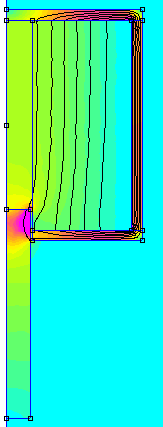I'm looking to minimize the weight of some solenoid actuators I want to build, so I'm trying to better understand the effects of the shielding / frame commonly found on solenoid actuators.
My understanding is the force exerted on the plunger is essentially only dependent on the cross sectional area of the plunger, the permeability of the plunger, and the flux density within the plunger. If that is correct, then it seems that the shielding doesn't really affect the plunger, only the reluctance (and thus the inductance) of the overall system.
If I were to remove the shielding, it seems that I could expect a very low inductance when there was no core, so I would have to be careful not to burn out my coil, but other than that it seems like the system should be largely unaffected. Am I understanding things correctly?
It seems like in practice there is a lot of effort taken to minimize the air gap in the system, and random forum posts state that if you don't do this your solenoid won't be as strong - however I have yet to see any math or reason to back this up or to explain how to figure out how much stronger one system is over another.
I'd be very grateful if someone could help clear this up!


